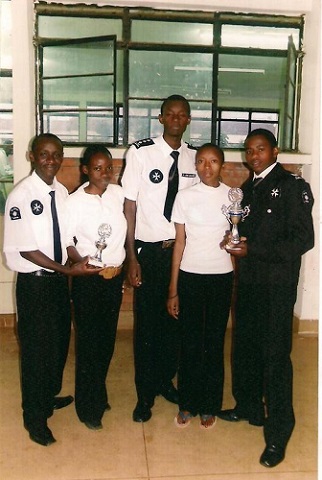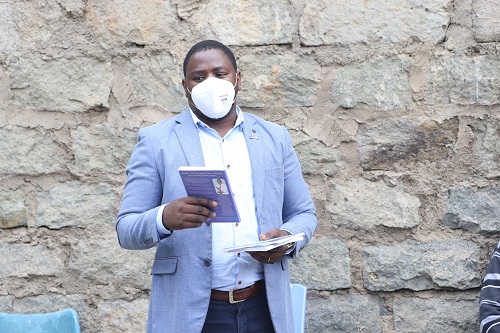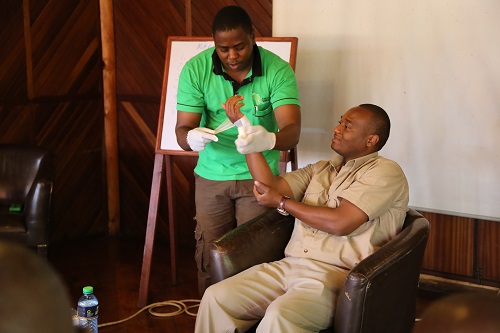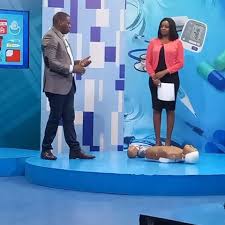Military health, safety, and security are paramount to maintaining the effectiveness and well-being of armed forces personnel. The unique and challenging environments in which military personnel operate demand a comprehensive approach to safety and health management. As Ambassador Steve Mbugua, a globally recognized safety ambassador with extensive experience in promoting safety across various sectors, I am dedicated to advancing military health, safety, and security. This article provides a detailed overview of best practices, trends, and strategies for ensuring the health and safety of military personnel, including insights into compliance, hazard management, and training.
Latest Trends in Military Health, Safety, and Security
Wearable Technology: Use of advanced wearable devices to monitor vital signs, physical activity, and environmental conditions, enhancing real-time health and safety monitoring.
Telemedicine: Implementation of telemedicine solutions for remote medical consultations and support, especially in remote or combat zones.
Advanced Personal Protective Equipment (PPE): Development of state-of-the-art PPE, including body armor, helmets, and chemical-resistant gear, to protect against various threats.
Mental Health Support: Increased focus on mental health programs and support systems to address PTSD, anxiety, and other psychological challenges faced by military personnel.
Health Surveillance Systems: Deployment of comprehensive health surveillance systems to track and manage health conditions and ensure timely medical interventions.
Emergency Response Training: Enhanced training programs for emergency response, including combat medicine and battlefield first aid.
Fitness and Wellness Programs: Implementation of advanced fitness and wellness programs designed to improve physical readiness and resilience.
Environmental Hazard Monitoring: Use of environmental monitoring systems to detect and mitigate hazards such as chemical, biological, and radiological threats.
Combat Casualty Care Innovations: Development of new techniques and technologies for treating combat injuries and enhancing survival rates.
Safety Culture Promotion: Efforts to foster a safety culture within military organizations, emphasizing the importance of adherence to safety protocols and continuous improvement.
Technology Integration: Integration of technology for improved safety, including surveillance systems and automated hazard detection.
Nutritional Support: Providing tailored nutritional programs to meet the unique dietary needs of military personnel and enhance performance.
Crisis Management Systems: Advanced systems for managing and responding to crises, including natural disasters and security threats.
Training Simulations: Use of advanced simulations and virtual reality for realistic training scenarios and hazard management.
Safety Audits and Compliance: Regular safety audits and compliance checks to ensure adherence to regulations and identify areas for improvement.
Occupational Health and Safety Management Systems in the Military Sector
Risk Assessment: Conducting thorough risk assessments to identify potential hazards in military operations and environments.
Safety Policies and Procedures: Developing and enforcing safety policies and procedures tailored to military operations and specific hazards.
Health and Safety Training: Providing comprehensive training on health and safety protocols, including hazard recognition and emergency response.
Incident Reporting and Analysis: Establishing systems for reporting and analyzing incidents to prevent recurrence and improve safety practices.
Medical Support Systems: Ensuring access to medical support and resources, including field hospitals and mobile medical units.
Emergency Preparedness: Developing and practicing emergency response plans for various scenarios, including combat situations and natural disasters.
Compliance with Regulations: Adhering to national and international safety regulations and standards relevant to military operations.
Safety Culture Initiatives: Promoting a culture of safety within the military through leadership, training, and continuous improvement.
Resource Allocation: Ensuring that adequate resources are allocated for safety measures, including equipment, personnel, and facilities.
Continuous Improvement: Implementing a system for continuous improvement based on feedback, incident reports, and safety audits.
Compliance Law in Military Safety
Adherence to International Standards: Complying with international safety and health standards relevant to military operations.
Regulatory Requirements: Staying updated on regulatory requirements specific to military safety, including occupational health and safety regulations.
Legal Obligations: Understanding and fulfilling legal obligations related to the safety and well-being of military personnel.
Contractual Safety Clauses: Including safety clauses in contracts with defense contractors and suppliers to ensure compliance with safety standards.
Documentation and Reporting: Maintaining accurate records and reports related to safety compliance and incident management.
Training on Legal Responsibilities: Providing training on legal responsibilities and compliance requirements for military personnel.
Common Military Hazards
Combat Injuries: Injuries resulting from combat activities, including gunshot wounds, shrapnel injuries, and blast injuries.
Chemical and Biological Threats: Exposure to chemical and biological agents, requiring specialized protective measures and decontamination procedures.
Physical Strain: Injuries and health issues related to physical strain and overexertion, including musculoskeletal disorders.
Heat Stress: Health issues resulting from high temperatures, including heat exhaustion and heatstroke.
Cold Stress: Health problems associated with exposure to cold environments, including hypothermia and frostbite.
Mental Health Issues: Psychological challenges such as PTSD, depression, and anxiety resulting from combat and stress.
Noise-Induced Hearing Loss: Hearing loss caused by exposure to high noise levels in combat and training environments.
Radiation Exposure: Risks associated with exposure to radiation in certain military operations, including nuclear and radiological threats.
Infectious Diseases: Risk of infections and diseases in various operational environments, requiring effective preventive measures.
Traumatic Brain Injuries: Head injuries resulting from blasts or impacts, requiring prompt diagnosis and treatment.
Exposure to Hazardous Materials: Risks associated with handling hazardous materials, including chemical agents and toxic substances.
Vehicle Accidents: Injuries and accidents involving military vehicles, including rollovers and collisions.
Falls and Collisions: Risks of falls and collisions in both training and operational settings, requiring proper safety measures.
Stress-Related Health Issues: Health problems resulting from prolonged stress and high-pressure situations.
Explosive Ordnance Risks: Hazards associated with handling and disposing of explosive ordnance.
Ergonomic Issues: Injuries related to poor ergonomics in equipment use and physical tasks.
Emergency Response Risks: Hazards encountered during emergency response operations, requiring specialized training and equipment.
Chemical Exposure: Risks of exposure to chemicals used in military operations and training, requiring protective measures.
Psychosocial Hazards: Issues related to interpersonal conflicts and social stressors within military environments.
Operational Hazards: Risks specific to various military operations, including environmental and situational factors.
Training and Inspections in Military Safety
Combat Medicine Training: Providing advanced training in combat medicine and battlefield first aid to enhance emergency response capabilities.
Safety Protocol Training: Educating military personnel on safety protocols, hazard recognition, and risk management.
Emergency Response Drills: Conducting regular drills to prepare for various emergency scenarios, including combat and natural disasters.
Equipment Handling Training: Training on the proper use and maintenance of military equipment to prevent accidents and ensure functionality.
Mental Health Support Training: Offering training on mental health support and stress management techniques for military personnel.
Hazardous Materials Training: Training on handling and responding to hazardous materials, including chemical and biological agents.
Compliance Training: Ensuring that military personnel are aware of and adhere to safety regulations and standards.
Safety Audits and Inspections: Regular audits and inspections of military operations, facilities, and equipment to identify and address safety issues.
Emergency Preparedness Training: Providing training on emergency preparedness and response, including evacuation procedures and crisis management.
Security Training: Educating personnel on security protocols, including threat identification and response strategies.
First Aid and CPR Training: Ensuring that all personnel are trained in first aid and CPR for immediate medical response.
Physical Fitness Training: Implementing fitness programs to ensure personnel are physically prepared for the demands of military operations.
Conclusion
Military health, safety, and security are critical to maintaining operational effectiveness and the well-being of armed forces personnel. By staying abreast of the latest trends, implementing robust safety management systems, and adhering to compliance laws, military organizations can create a safer environment for all involved. As Ambassador Steve Mbugua, I am committed to advancing safety in the military sector through comprehensive strategies and continuous improvement. For more information, resources, and insights on enhancing military health and safety, please visit www.ambstevembugua.co.ke and explore my books and articles. Together, we can ensure the highest standards of safety and security for military personnel around the world.
READ MORE
Safety Culture Video
First Aid and Safety Training
Safety Management Systems
Largest Health, Safety and Security Equipment Supplier



















